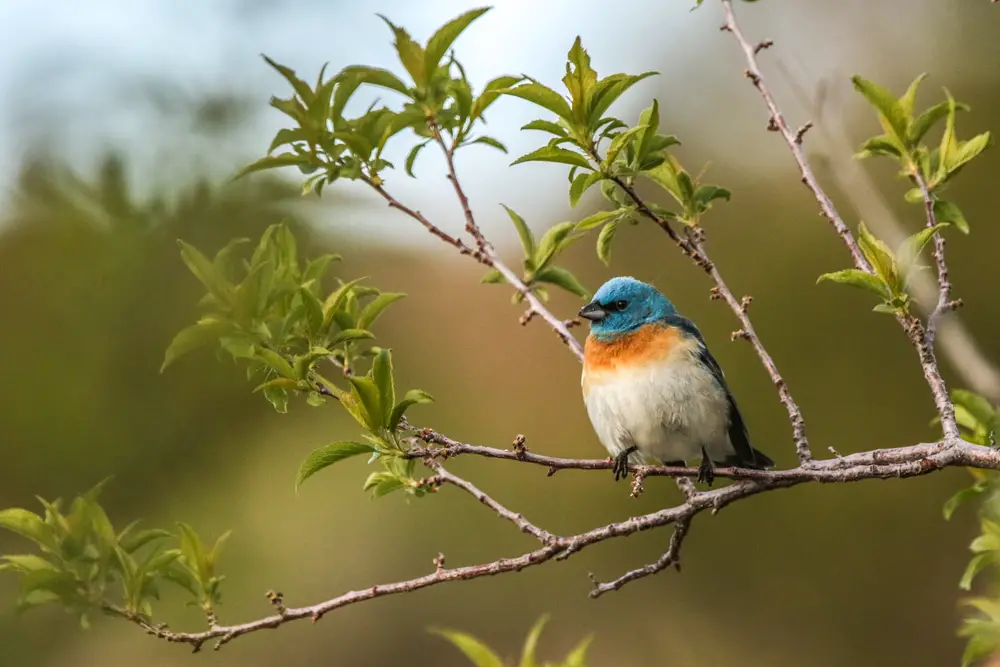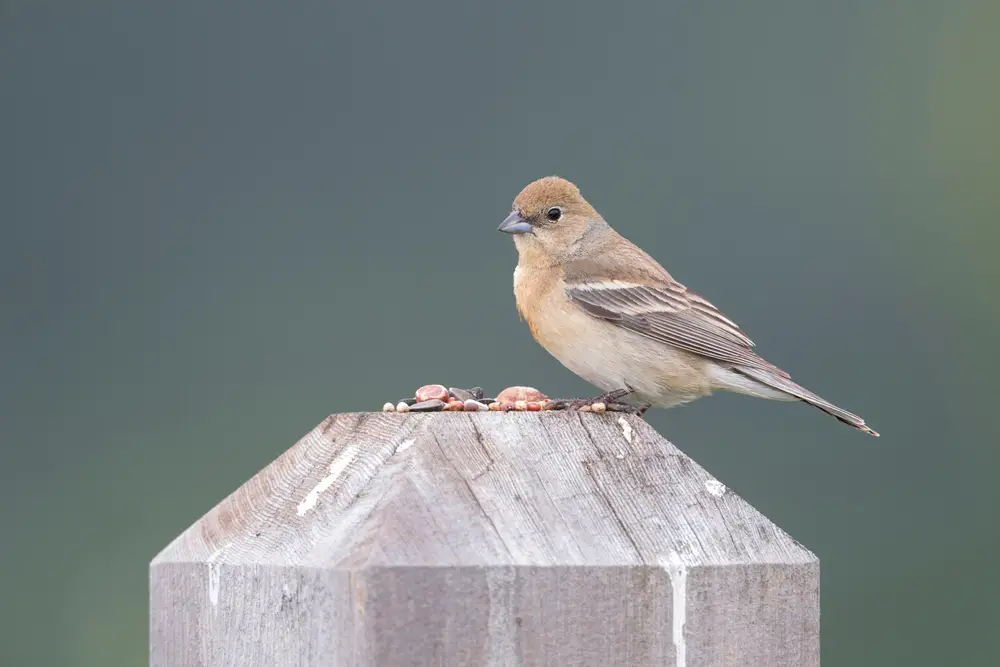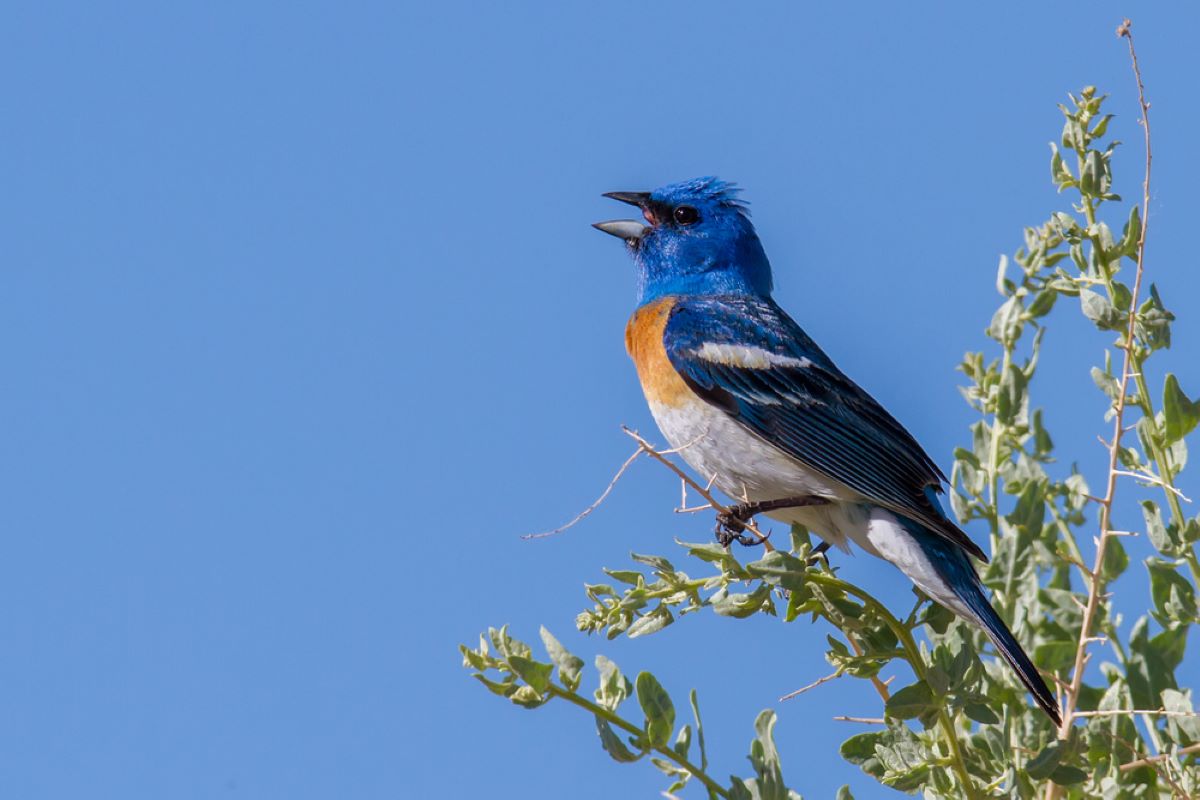Lazuli bunting is a tiny, stocky songbird often seen around New Mexico, Arizona, California, and Texas. They breeding in valleys, on hillsides near streams, and at high elevations in the western parts of North America. Lazuli can live about 9 years, but most don’t survive beyond the age of 5.
They usually won’t live longer than 5 years, but some birders noted a specimen that survived for almost 10 years. Here’s what lazuli buntings look like and how you can differentiate them from other similar birds.
About Lazuli Bunting (Passerina Amoena)
Lazuli bunting is one of the prettiest birds in North America. It belongs to the family Cardinalidae, order passeriformes, and has a conservation status of least concerned. It’s common, and the numbers are stable.
This sparrow-sized bird has a wingspan of 8.7 inches and a length of 5.1-5.9 inches. Lazulis are small and stocky songbirds. Their bill is cone-shaped, and their tail is slightly forked. This passerine kind perches upright, and you’ll hear it sing from low trees and shrubs.
Lazuli Bunting Nesting and Diet
Lazuli buntings will lay 4 eggs on average and make 2 broods annually. Their eggs are pale blue. Lazulis’ nests are loose cups made from grass. Furthermore, lazuli buntings will often hybridize with indigo buntings.
The incubation period is up to 12 days. After hatching, the babies will wait 12 more days before leaving the nest. Males sing to defend the territory, and females are usually responsible for feeding the young, but males might sometimes help. Unfortunately, their nests are often exposed to grazing and parasitism.
When it comes to lazuli’s diet, they prefer bird feeders packed with the following seeds:
- White millet
- Sunflower seeds
- Nyjer seeds
- Thistle seeds
However, they’ll mostly eat insects. These birds feed on the ground, in bushes, and on treetops. They also catch insects during flight. Their favorite source of proteins are:
- Grasshoppers
- Caterpillars
- Beetles
- True bugs
- Wild bees
- Ants

What Are the Physical Characteristics of the Lazuli Bunting?
Lazuli buntings are quite colorful birds. Their backs are grey with a blue section around their eyes and chin. Below, you’ll see a patch of pale orange reaching down towards their white bellies. The wings are grey with white wing bars.
Female vs. Male Lazuli Buntings
Adult males have a white shoulder patch. They’re brilliant blue above with orange-colored breasts. Females have gray sections above with a blue tinge to their wings and tails. Juveniles and non-breeding males also have orange breasts, but their backs are blue and tan.
Comparison to Similar Bird Species
Lazuli buntings resemble many other bird species. For example, you may mistake them for blue grosbeak, which has brownish wing bars and is entirely blue on the front. Then, there’s an indigo bunting, which has grayish wings. Other similar species are:
- Painted bunting — Packed with more colors, including yellow
- Western Bluebirds — Deeper brown chest compared to lazuli
- Brown-headed cowbirds — Fully brown heads

What Is the Lazuli Bunting’s Habitat?
The favorite habitat of lazuli bunting includes bushy areas and weedy pastures. They’re sometimes seen around towns. The breeding occurs on hillsides, close to streams, and wooded valleys, up to 9,500 feet in elevation around western North America. The breeding range map includes central New Mexico, Arizona, California, southern Canada, and northern Texas.
These birds are also migrants and will go to southeastern Arizona and Mexico. They may spend the breeding season close to indigo buntings around Great Plains and southwest areas. During summer, lazuli buntings are seen around North America, southern British Columbia, and Alberta.
What Is the Lifespan of a Lazuli Bunting?
The maximum longevity of lazuli is around 9.9 years in the wilderness. Still, most lazulis don’t survive beyond the age of 5. At the moment, there are no existing records of average or expected lifespan in captivity.

